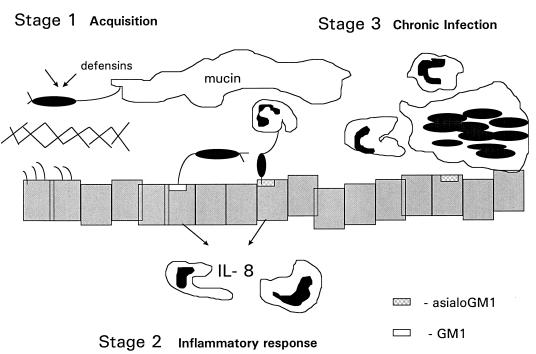FIG. 9.
Model of respiratory tract infection. Stage 1, acquisition of organisms from the environment. Motile, piliated organisms are inhaled and usually killed by local defensins (arrows) and removed by mucociliary clearance before penetrating the glycocalyx. Stage 2, immunostimulatory phase. In CF, due to diminished defensin activity, organisms produce exoproducts which destroy the protective glycocalyx, allowing access to the epithelial surface. Flagella may function to tether the bacteria to the mucosal surface. The close apposition of the organism to glycolipid receptors found predominantly on cells with mutant CF transmembrane conductance regulator function allows pilin-mediated attachment to occur, followed by stimulation of epithelial IL-8 expression and migration of PMNs to the airway. Stage 3, adaptation and chronic infection. In response to the immune pressure of the host, mutants which do not express flagella as well as the alginate-producing strains are selected and predominate due to their ability to avoid phagocytic clearance.

